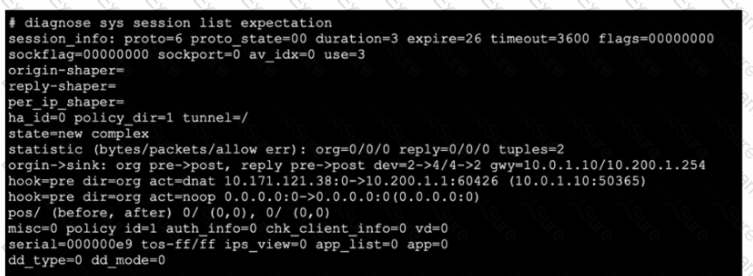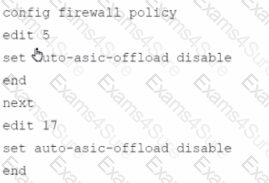Fortinet NSE 7 - Network Security 7.2 Support Engineer
Last Update 2 months ago
Total Questions : 40
Fortinet NSE 7 - Network Security 7.2 Support Engineer is stable now with all latest exam questions are added 2 months ago. Incorporating NSE7_NST-7.2 practice exam questions into your study plan is more than just a preparation strategy.
NSE7_NST-7.2 exam questions often include scenarios and problem-solving exercises that mirror real-world challenges. Working through NSE7_NST-7.2 dumps allows you to practice pacing yourself, ensuring that you can complete all Fortinet NSE 7 - Network Security 7.2 Support Engineer practice test within the allotted time frame.

Refer to the exhibit, which shows a partial output of the fssod daemon real-time debug command
What two conclusions can you draw from the output? (Choose two.)
Which three conditions are required for two FortiGate devices to form an OSPF adjacency? (Choose three.)
Refer to the exhibit, which shows a truncated output of a real-time LDAP debug.

What two conclusions can you draw from the output? (Choose two.)
Refer to the exhibit, which shows a truncated output of a real-time RADIUS debug.

Which two statements are true? (Choose two.)
Refer to the exhibit,which shows the output of a diagnose command

What two conclusions can you draw from the output shown in the exhibit? (Choose two.)
Which three common FortiGate-to-collector-agent connectivity issues can you identifyusing the FSSO real-time debug?(Choose three.)
Exhibit.

Refer to the exhibit, which shows the omitted output of diagnose npu np6 port-list on a FortiGate1500
D.
An administrator is unable to analyze traffic flowing between port1 and port7 using the diagnose sniffer command.
Which two commands allow the administrator to view the traffic? (Choose two.)
A)

B)

C)

D)

Refer to the exhibit, which contains the partial output of a diagnose command.

Based on the output, which two statements are correct? (Choose two.)
Refer to the exhibit, which shows the output of diagnose syssessionstat. Which statement about the output shown in the exhibit is correct?


TESTED 31 Mar 2025
Hi this is Romona Kearns from Holland and I would like to tell you that I passed my exam with the use of exams4sure dumps. I got same questions in my exam that I prepared from your test engine software. I will recommend your site to all my friends for sure.
Our all material is important and it will be handy for you. If you have short time for exam so, we are sure with the use of it you will pass it easily with good marks. If you will not pass so, you could feel free to claim your refund. We will give 100% money back guarantee if our customers will not satisfy with our products.